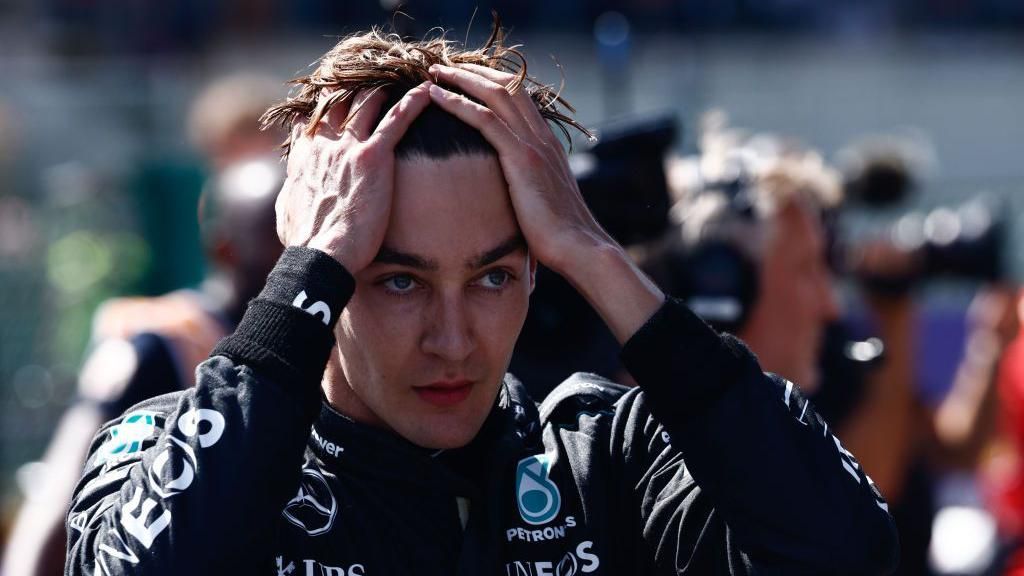
Mercedes say George Russell was disqualified from the Belgian Grand Prix because his car lost more weight than they expected in a number of areas.
Russell lost the win because his car was found to be 1.5kg underweight after the race, with team-mate Lewis Hamilton elevated to first in his place.
Trackside engineering director Andrew Shovlin said the car’s tyres, underfloor ‘plank’ and Russell himself all affected the car’s final weight.
Shovlin said: “The car can lose quite a lot of weight during the race. You get tyre wear, plank wear, brake wear, oil consumption.
“The driver themselves can lose a lot, and in this particular race George lost quite a bit of weight.
“George’s car was the only one that had the problem, and it is because things like the tyre wear was much higher. It looks like we lost more material on the plank.
“We will collect all that data though, look at how we can refine our processes because, clearly, we do not want that to happen in the future.”
All Formula 1 drivers lose weight during a race – sometimes as much as 3kg – because of fluid loss from sweating. In Belgium, Russell lost more than he expected to.
In addition, the decision by team and driver to switch to a one-stop strategy, when they had been planning to do two, meant that his tyres had done around double the amount of laps expected, so had lost more rubber.
The underbody ‘plank’ is a device aimed at stopping the cars running too low, and they are measured by officials to ensure they do not wear too much.
Russell’s still complied with the rules but it had eroded more than expected.
Russell pulled off an unlikely victory on the road having decided mid-race to stick with the tyres he fitted on lap 10, rather than stop again.
The decision leapt him up from fifth to the lead, from where he defended his position against Hamilton’s attacks in the closing laps.
McLaren’s Oscar Piastri also finished right on the Mercedes’ tails in third place.
Sholvin admitted the lower weight would have given Russell a performance advantage.
“In terms of pace at the start of the race, it is nil because George’s car and Lewis’ car start the race at the same weight,” he said.
“Obviously, as George’s car was losing weight faster than Lewis’ throughout the race, there is an associated gain with that.
“But you are into the hundredths of a second per lap. It will be very small because when you are talking about amounts like one or two kilos, they do not amount to a lot of lap time.”
Shovlin said the outcome of the race was “bittersweet” for Mercedes because Hamilton had still managed to win after the team had looked uncompetitive in Friday practice.
Mercedes tried a new floor design on Friday at Spa but took it off both cars for qualifying and the race after their difficult day’s running.
But Shovlin said it was likely the new floor would be used again at the next race, the Dutch Grand Prix on 23-25 August.
“We are planning to do that,” he said. “The reason we reverted the car to the Silverstone spec on Friday night was because we had a good race in Silverstone (where Hamilton won).
“Spa and Silverstone are not dramatically different circuits in terms of the corner speed range that you are dealing with.
“We had clearly introduced some problems somewhere. We think that was largely due to how we were running the car in Spa, not induced by the updates themselves.
“That was giving us a bit of bouncing in the high-speed corners, as well as a few issues with the balance.
“Going to that Silverstone car got it all back to normal. We have since had time to look at the data to understand what it was that we did, and we are pretty confident that we will be going for a reintroduction in Zandvoort.”
